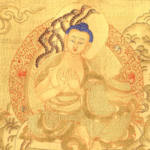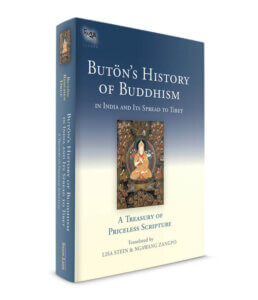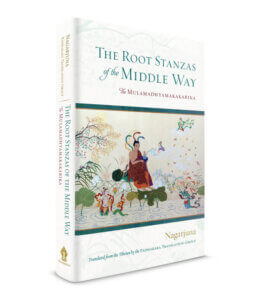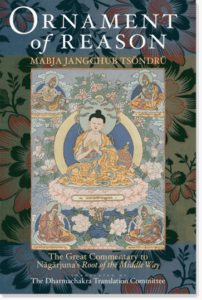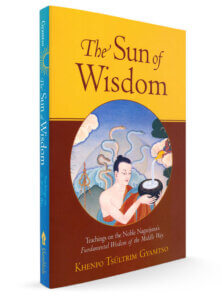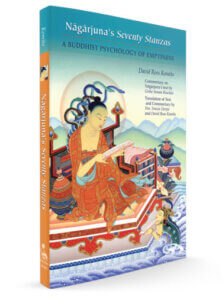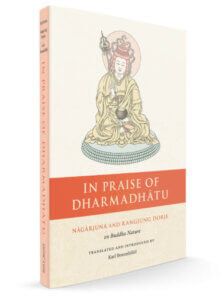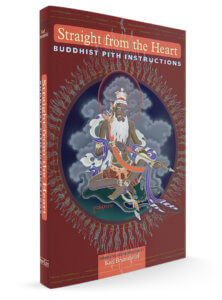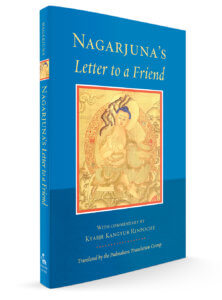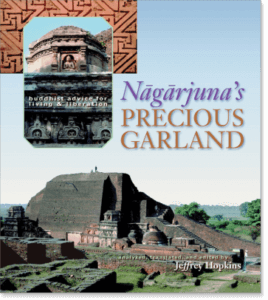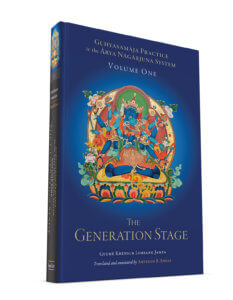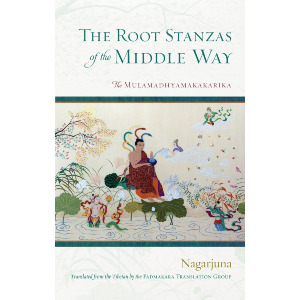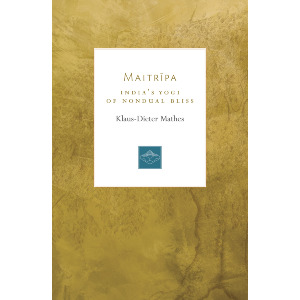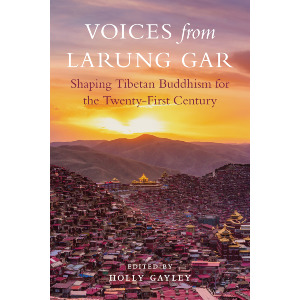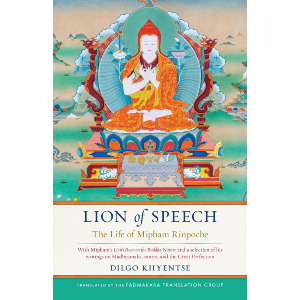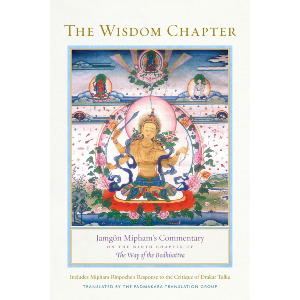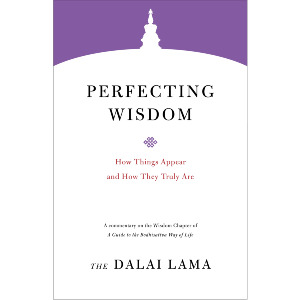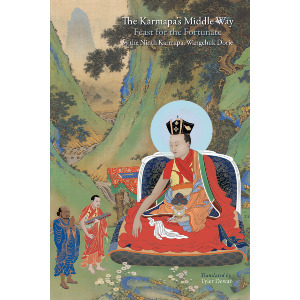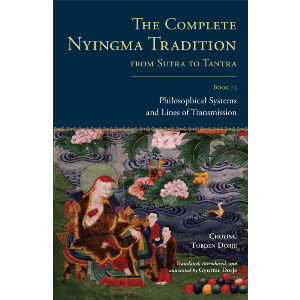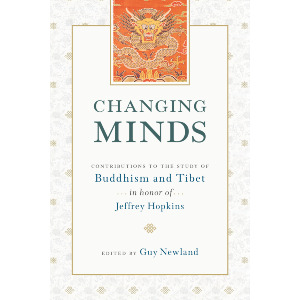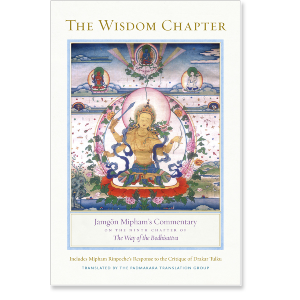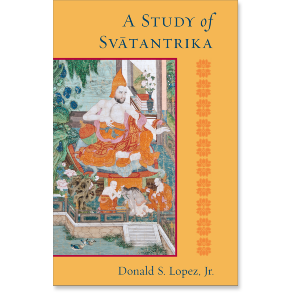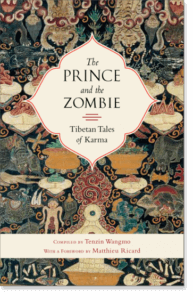Nagarjuna
circa 150 – c. 250 CE
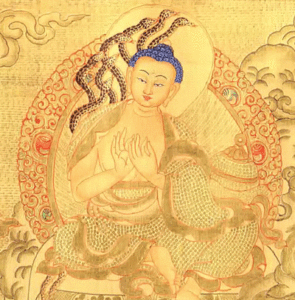
Of Nagarjuna’s life, we know almost nothing. He is said to have been born into a Brahmin family in the south of India around the beginning of the second century CE. He became a monk and a teacher of high renown and exerted a profound and pervasive influence on the evolution of the Buddhist tradition in India and beyond. Much of his life seems to have been spent at Sriparvata in the southern province of Andhra Pradesh, at a monastery built for him by king Gotamiputra, for whom he composed the Suhrllekha, his celebrated Letter to a Friend.
Nagarjuna is intimately associated with the Prajnaparamita sutras, the teachings on the Perfection of Wisdom, the earliest-known examples of which seem to have appeared in written form around the first century BCE, thus coinciding with the emergence of Mahayana, the Buddhism of the Great Vehicle.
It is recorded in the Pali Canon that the Buddha foretold the disappearance of some of his most profound teachings. They would be misunderstood and neglected, and would fall into oblivion. “In this way,” he said, “those discourses spoken by the Tathāgata that are deep, deep in meaning, supramundane, dealing with emptiness, will disappear.” There is no knowing whether on that occasion he was referring to the Perfection of Wisdom, but it is certain that the earliest exponents of the Mahayana believed that, with the Prajnaparamita scriptures, they were recovering a profound and long-lost doctrine. Nagarjuna seems to have been deeply implicated in this rediscovery. Questions of historicity aside, the story that he brought back seven volumes of the Prajnaparamita sutras from the subterranean realm of the nagas, where they had been preserved, conveys a clear message. In the eyes of Nagarjuna’s contemporaries and of later generations, the appearance of the Prajnaparamita sutras marked a new beginning in the history of Buddhism, and yet the teachings they contained were not innovations. And in their interpretation and propagation, Nagarjuna played a crucial role.
-Excerpted from the "Translator's Preface," The Root Stanzas of the Middle Way translated by Padmakara Translation Group
Jump to sections on this page:
Nagarjuna's Life | Madhayamaka & Reasoning | Praises
Advice | Tantra | Recent Works on Madhyamaka | Other Works and Resources

Nagarjuna's Life
A more comprehensive biography of Nagarjuna can be found in Butön's History of Buddhism in India and Its Spread to Tibet. A fourteenth-century Tibetan classic that serves as an excellent introduction to basic Buddhism as practiced throughout India and Tibet and describes the process of entering the Buddhist path through study and reflection.
What follows is a brief composite biography from a variety of sources including Butön Rinchen Drup's biography of Nagarjuna.
Overcoming his fated death
Nagarjuna was born to a Brahmin family in Vidarbha in present-day Maharashtra, India. Predicted to have a short life, he avoided an early demise by taking ordination at Nalanda monastery with Rahulabhadra, identified in some accounts as being the mahasiddha Saraha and in others as being the abbot of Nalanda; regardless, he is best known for his works in praise of Prajñaparamita. With an ordination name of Sriman, Nagarjuna undertook thorough studies of Buddhist teachings and became successful in defeating both Buddhists and non-Buddhists in debate.
Prajñaparamita sutras
Several nagas heard Sriman's teaching and subsequently invited him down into their realm, from which he later brought back special naga clay that was used in the construction of many temples and stupas. He also brought back, most famously, important Prajñaparamita sutras. Thenceforth he became known as Nagarjuna.
Butön describes the meaning of the name beautifully:
Naga signifies birth from the basic space of phenomena, abiding in neither the extreme of eternalism or nihilism, mastery over the vault of precious scriptures, and being endowed with the view that burns and illuminates. Arjuna signifies one who has procured worldly power. Thus, he is named Arjuna because he governs the kingdom of the doctrine and subdues the hosts of faulty enemies. Taken together, these two parts form the name "Nagarjuna."
Nagarjuna's activities were vast; his better-known accomplishments include the building of two structures in Bodhgaya- the stone fence around the Vajra Seat beneath the Bodhi tree and the stupa that sits atop the Mahabodhi Temple - as well as the wall around the great Dhanyakataka Stupa at Amaravati in present-day Andhra Pradesh.
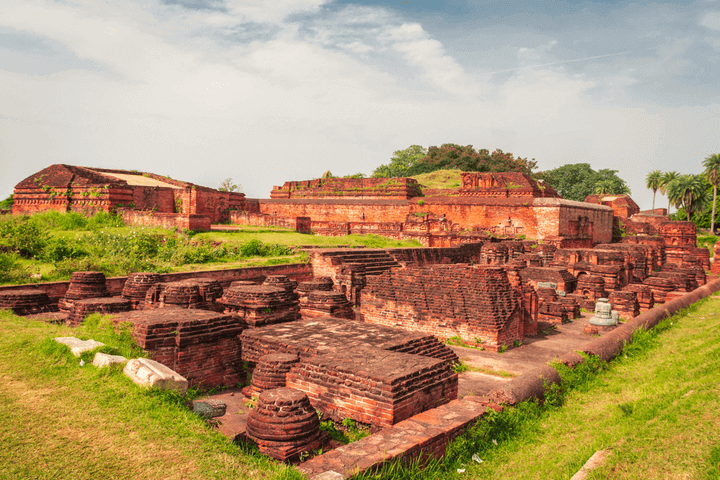
Karma at work
Nagarjuna passed away when he offered his head to a greedy prince who thought he could ensure his own long life by killing Nagarjuna. No blade would cut Nagarjuna, but he told the prince that in a past life he had killed an insect with a blade of kusha grass, so his head could be cut off with a blade of that grass which the prince then did.
It is believed that Nagarjuna's head and body were separated but do not decay and over time move closer together. Once they rejoin, his activity will continue.
Nagarjuna's Texts
The Tibetan Tengyur ascribes about one hundred eighty texts on both the sutras and tantras to him. There is a lot of scholarly debate about what Nagarjuna did and did not actually write, which is outside the scope of this article. Instead, we will focus on the major works widely attributed to him that are available in English.
His treatises are divided in various ways. Mabja Jangchub Tsondru divides them into three groups:
- Those belonging to the Causal Vehicle of Characteristics
- Those belonging to the Resultant Vehicle of Secret Mantra
- Those that show the two above to be identical in meaning
A bit arbitrarily, we will follow another traditional division which groups the treatises as follows: works on reasoning, praises, and advice. This schema ignores the large body of work on tantra and medicine, but most of what is available in English is included in these three groupings.
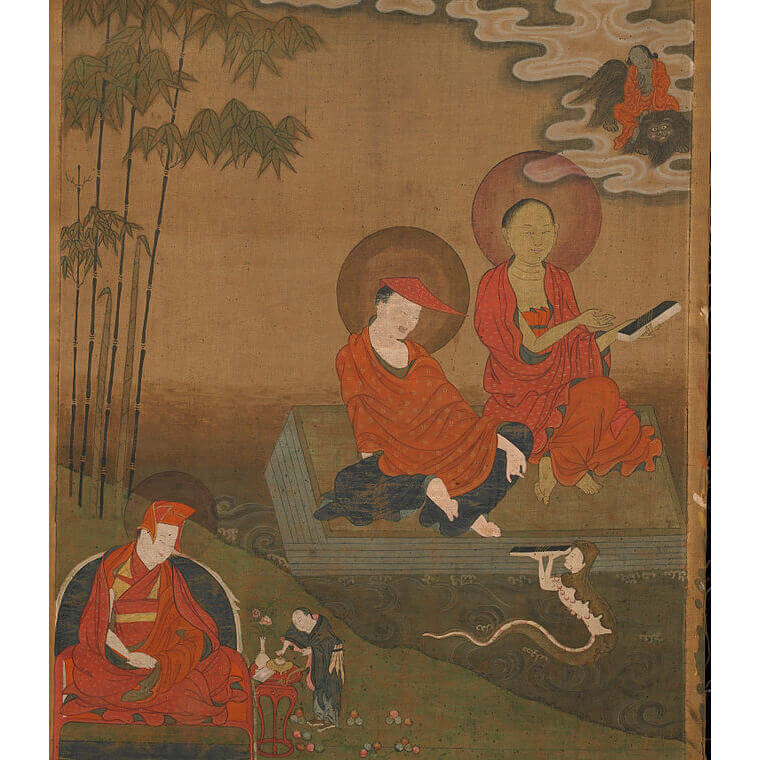
Nagarjuna on Madhyamaka & Reasoning
The above verse is from Nagarjuna's famed Root Stanzas of the Middle Way—by far his most widely studied text.
The Root Stanzas of the Middle Way
This volume presents a new English translation of the founding text of the Madhyamaka (Middle Way) school of Mahayana Buddhism, Nagarjuna’s Root Stanzas of the Middle Way (Mulamadhyamakakarika) and includes the Tibetan version of the text. The Root Stanzas holds an honored place in all branches of Tibetan Buddhism, as well as in the Buddhist traditions found in China, Japan, and Korea, because of the way it develops the seminal view of emptiness (shunyata), which is crucial to understanding Mahayana Buddhism and central to its practice. It is prized for its pithy and pointed arguments that show that things lack intrinsic being and thus are “empty” (shunya). They abide in the Middle Way, free from the extremes of permanence and annihilation.
This translation was done following the commentary by Mipham Rinpoche, thus appealing to a living tradition that stretches back unbroken to the Tibetan translators and through their Sanskrit mentors to Nagarjuna himself.
The present work contains Nagarjuna's verses on the Middle Way accompanied by Mabja Jangchub Tsöndrü's famed commentary, the Ornament of Reason. Active in the twelfth century, Mabja was among the first Tibetans to rely on the works of the Indian master Candrakirti, and his account of the Middle Way exercised a deep and lasting influence on the development of Madhyamaka philosophy in all four schools of Buddhism in Tibet. Sharp, concise, and yet comprehensive, the Ornament of Reason has been cherished by generations of scholar-practitioners. The late Khunu Lama Tenzin Gyaltsen Rinpoche, a renowned authority on the subject, often referred to this commentary as "the best there is." A visual outline of the commentary has been added that clearly shows the structure of each chapter and makes the arguments easier to follow.
Hardcover | eBook
$27.99 - eBook
Paperback | eBook
$24.95 - Paperback
The Sun of Wisdom: Teachings on the Noble Nagarjuna's Fundamental Wisdom of the Middle Way
by Khenpo Tsultrim Gyamtso
An excellent contemporary commentary on the Mulamadhyamakakarika is Khenpo Tsultrim Gyamtso's The Sun of Wisdom. Focusing on the most important root verses, it is a very accessible entryway into this fundamental but challenging text.
As Khen Rinpoche says,
All the verses in this book are excellent supports for developing your precise knowledge of genuine reality through study, reflection, and meditation. You should recite them as much as possible, memorize them, and reflect on them until doubt-free certainty in their meaning arises within. Then you should recall their meaning again and again, to keep your understanding fresh and stable. Whenever you have time, use them as the support for the practices of analytical and resting meditation. If you do all of this, it is certain that the sun of wisdom will dawn within you, to the immeasurable benefit of yourselves and others.
Paperback | eBook
$27.95 - Paperback
by David Ross Komito and Geshe Sonam Rinchen
Nagarjuna's Shunyatasaptati, or Seventy Stanzas on Emptiness (there are actually seventy-three), is an expansion of the seventh section of the Root Verses, "Analysis of Characteristics of the Conditioned," that addresses some questions people had about the presentation of conditioned phenomena and whether that conflicted with sutra teachings. As is often the case, the answer lies in the difference between the conventional point of view of beings and how things actually are.
Additional Texts on Reasoning by Other Publishers
Of the remaining texts in this category,
- Nagarjuna's Yuktisastika, or Sixty Verses on Reasoning, has been translated by Joseph Loizzo as Nagarjuna's Reason Sixty and is available from Columbia University Press.
- The Vigrahavyavartani, or Refutation of Objections, was translated most recently by Jan Westerhoff and published as The Dispeller of Disputes by Oxford University Press.
- And lastly, Nagarjuna's Vaidalyaprakarana is included in Nagarjuniana by Christian Lindtner, published by Motilal Banarsidass.

Nagarjuna's Praises
The Tibetan Tengyur identifies eighteen works of praise by Nagarjuna, and this praise is generally directed at Buddha Shakyamuni.
Paperback | eBook
$29.95 - Paperback
Translated and introduced by Karl Brunnholzl
While most of Nagarjuna's praises are directed to Buddha Shakyamuni, the main work of Nagarjuna's praises we have in English is the Dharmadhatustava, translated as In Praise of Dharmadhatu, and this work directs praise instead at the ultimate nature of mind. Karl Brunnhölzl's translation, which includes an in-depth introduction to Nagarjuna and his works in general and this one specifically, also contains a commentary by the Third Karmapa Rangjung Dorje.
The text shows how our buddha nature is obscured by stains but also how the stains can be removed by following the path of the Mahayana and can be fully revealed as buddhahood. Rangjung Dorje's commentary is also of particular interest because even though he is known for his shentong views, this commentary shows how his actual understanding is far more subtle than scholars have sometimes supposed and is in fact an elegant synthesis of the two great streams of the Mahayana, Madhyamaka, and Yogacara.
Paperback | eBook
$49.95 - Paperback
Translated and introduced by Karl Brunnholzl
Three other praises of Nagarjuna's are included in the collection Straight from the Heart, also translated and introduced by Karl Brunnhölzl</a>. Interestingly, in these praises, Nagarjuna often refers to buddhahood in positive terms, in contrast to much of his other work, which deconstructs any possibility of phenomena truly existing. As Brunnhölzl points out, despite there being nothing to pinpoint in the dharmadhatu as the nature of the mind, it can still be experienced directly and personally in a non-referential way. In other words, enlightenment is not some empty, dark nothingness, but wide-awake awareness of mind completely free from reference points.
Nagarjuna's Advice
There are seven texts included in the advice category. The two most famous are the Suhrllekha, or Letter to a Friend, and the Ratnavali, or Nagarjuna's Precious Garland: Buddhist Advice for Living and Liberation.
Paperback | eBook
$24.95 - Paperback
Nagarjuna's Letter to a Friend: With Commentary by Kangyur Rinpoche
Translated by the Padmakara Translation Group
Letter to a Friend is a set of verses of advice to a king whose identity is uncertain but who was most likely one of a number of kings in present-day Andhra Pradesh. There are several translations of Letter to a Friend, the most recent one being by the Padmakara Translation Group, which includes a commentary by Kyabje Kangyur Rinpoche.
The 123 verses are some of the most frequently quoted lines in all of Tibetan Buddhism and are taught often to this day. The text covers the entire Mahayana path, fusing daily conduct with the framework of stages that lead beings to fully enlightened buddhahood. It makes the entire path totally accessible to laypeople, demonstrating how to completely immerse oneself in the spiritual life while still living in society.
Paperback | eBook
$27.95 - Paperback
Translated by Jeffrey Hopkins
Precious Garland has been categorized by some as belonging among Nagarjuna's works on reasoning, but more traditionally it is part of the advice collection.
In the Precious Garland, he offers intimate counsel on how to conduct one's life and how to construct social policies that reflect Buddhist ideals. The advice for personal happiness is concerned first with improving one's condition over the course of lifetimes, and then with release from all kinds of suffering, culminating in Buddhahood. Nagarjuna describes the cause and effect sequences for the development of happiness within ordinary life, as well as the practices of wisdom, realizing emptiness, and compassion that lead to enlightenment. He describes a Buddha's qualities and offers encouraging advice on the effectiveness of practices that reveal the vast attributes of Buddhahood. In his advice on social and governmental policy, Nagarjuna emphasizes education and compassionate care for all living beings. He also objects to the death penalty. Calling for the appointment of government figures who are not seeking profit or fame, he advises that a selfish motivation will lead to misfortune. The book includes a detailed analysis of attachment to sensual objects as a preparation for realization of the profound truth that, when realized, makes attachment impossible.
Nagarjuna on Tantra
The one work we have is not actually by Nagarjuna but the basis for it is Nagarjuna's Piṇḍīkramaḥ and the Sūtramelāpakam.
Guhyasamaja Practice in the Arya Nagarjuna System, Volume One: The Generation Stage
by Gyumé Khensur Lobsang Jampa, translated by Artemus Engle
The Guhyasamāja Tantra is one of the Unexcelled Yoga Tantras of Vajrayana Buddhism. In the initial, generation-stage practice, one engages in a prescribed sequence of visualizations of oneself as an enlightened being in a purified environment in order to prepare one’s mind and body to engage in the second stage: the completion stage. The latter works directly with the subtle energies of one’s mind and body and transforms them into the enlightened mind and body of a buddha. In this book, Gyumé Khensur Lobsang Jampa, a former abbot of Gyumé Tantric College, provides complete instructions on how to practice the generation stage of Guhyasamāja, explaining the visualizations, offerings, and mantras involved, what they symbolize, and the purpose they serve. These instructions, which are usually imparted only orally from master to student after the student has been initiated into the Guhyasamāja mandala, are now being published in English for the first time and are supplemented by extracts from key written commentaries in the footnotes to support practitioners who have received the required transmissions from a holder of this lineage. The complete self-generation ritual is included in the second part of the book, with the Tibetan on facing pages, which can be used by those who read Tibetan and want to recite the ritual in Tibetan.
Hardcover | eBook
$49.95 - Hardcover
Subsequent Commentaries by Great Indian and Tibetan Masters
There are of course so many commentaries and commentaries on commentaries for Nagarjuna's work, by masters including the following:
...and many more great teachers up to the present. Several of these are included in subsequent Great Masters Series articles.
Recent works on Madhyamaka
Other Works and Resources
Paperback | eBook
$19.95 - Paperback
The Prince and the Zombie: Tibetan Tales of Karma
By Tenzin Wangmo, foreword by Matthieu Ricard
One last book should be mentioned here, as it's a bit of a leap from the traditional texts by and literature about Nagarjuna. The Prince and the Zombie: Tibetan Tales of Karma by Tenzin Wangmo is a book based on Tibetan oral folktale traditions.
In this book,was published in the spring of 2015, a young prince encounters Nagarjuna, who guides him and gives him the task of bringing a zombie-that's really the best translation available-back from one of the great charnel grounds of India. It is a story full of magic and excitement and could serve as a brief vacation for the mind in between studying verses on emptiness!

